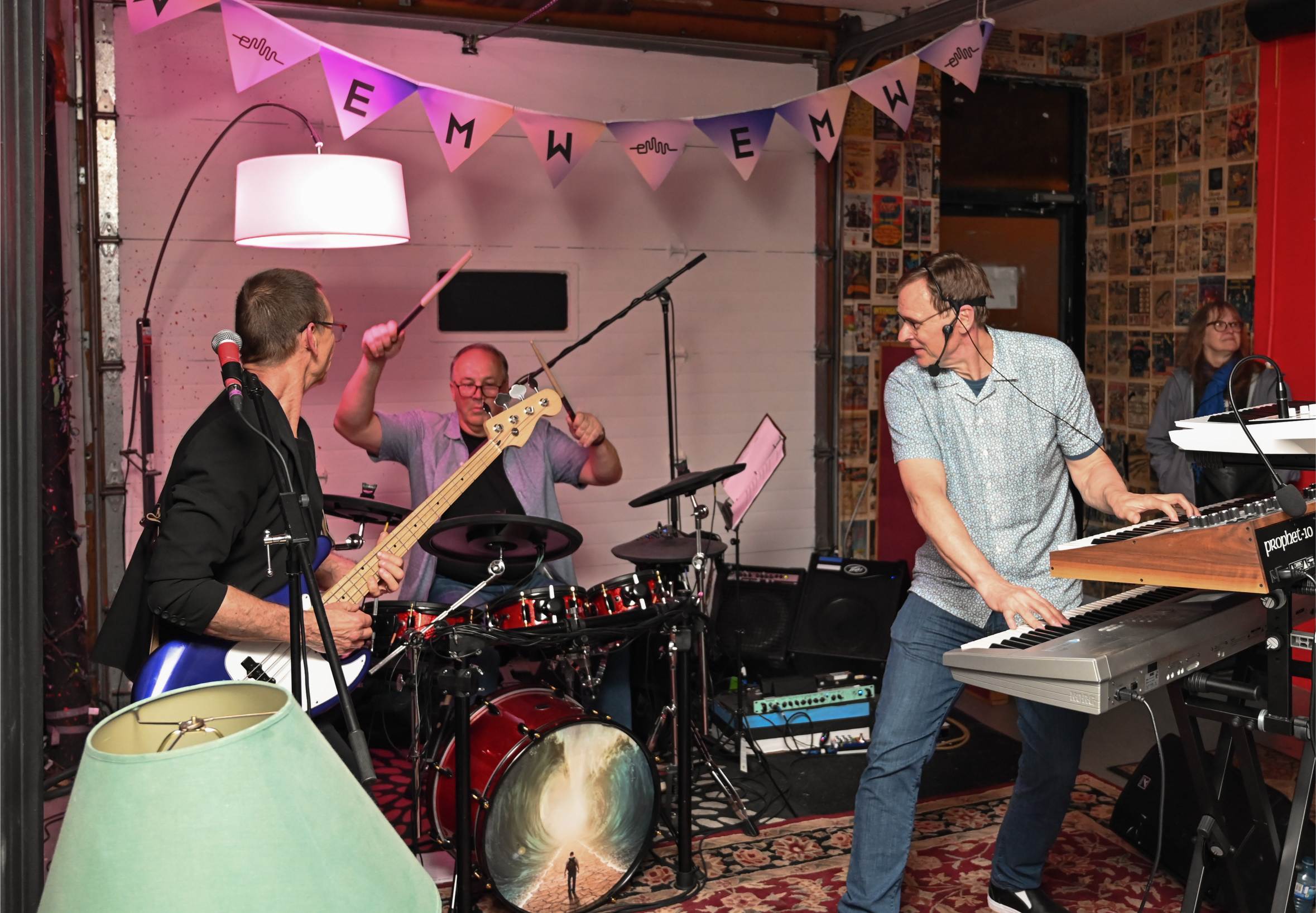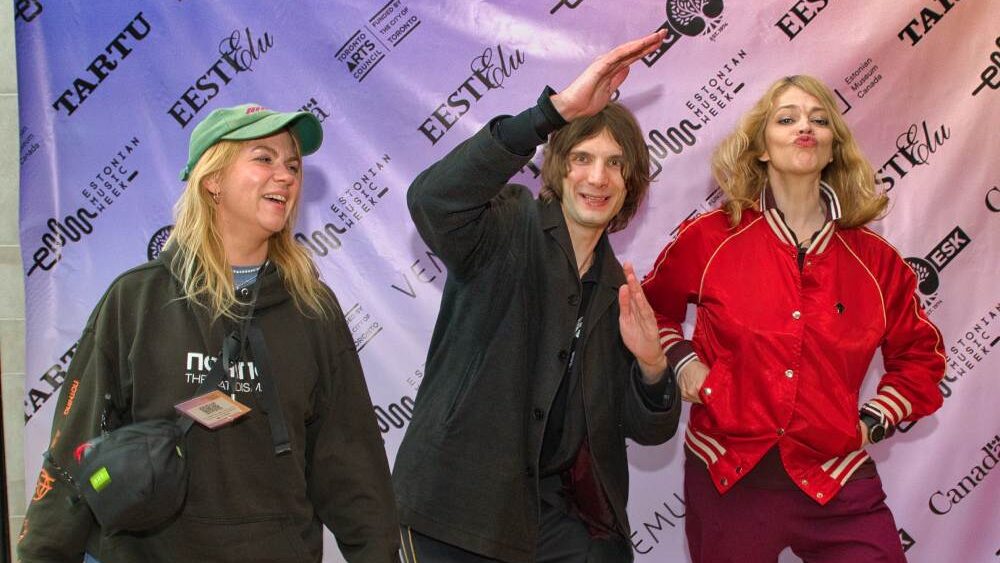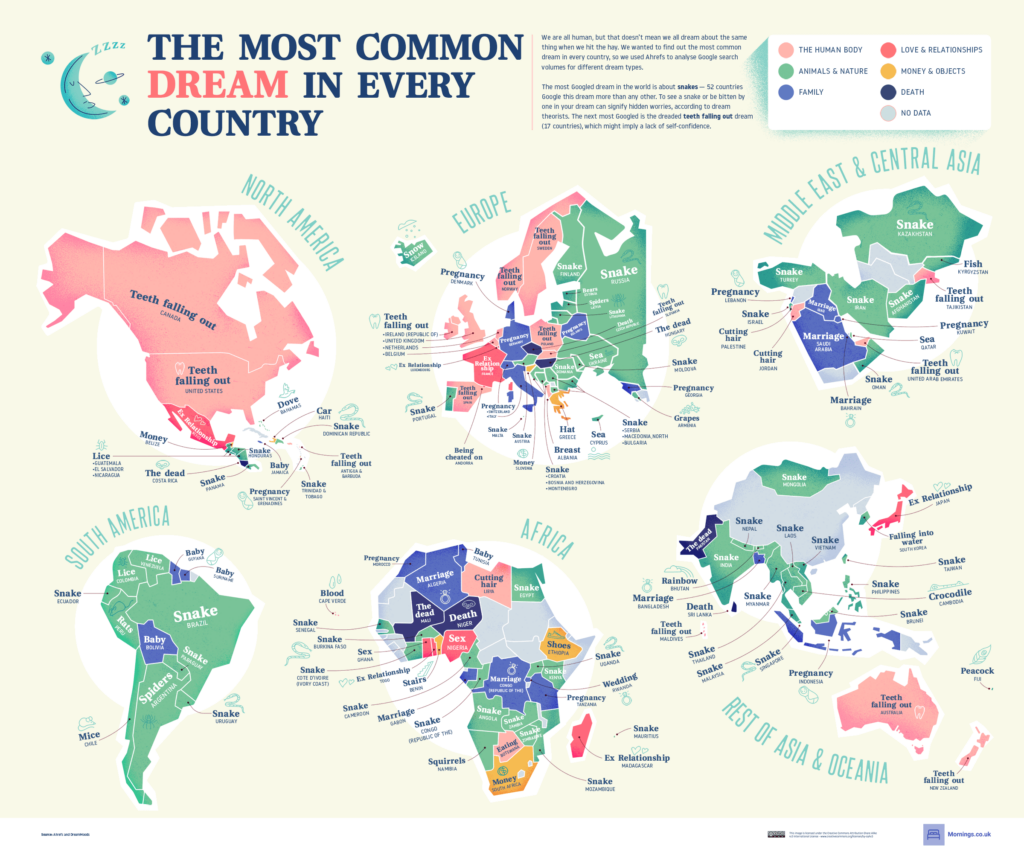
It’s hard to say. Estonia has a pretty unique most-common dream—bears (even living in Canada, I can attest to having had this dream once), that might be associated with Estonia’s vast expanses of wilderness and roaming wildlife.
Flooding doesn’t make the list. But on a number of social occasions, this has come up as a bad dream people have. Reoccuring dreams of a tsunami or other big flood may be a result of anxiety, a feeling of being overwhelmed, or feeling like you can’t escape from something. Discussions about climate change or even hearing the biblical story of Noah probably add detail to this awful dream.
But what would we do if a catastrophic flood were to actually come towards us, sweeping everything away? This is what we face head on in Flow, the animated fantasy film directed by Gints Zilbalodis.
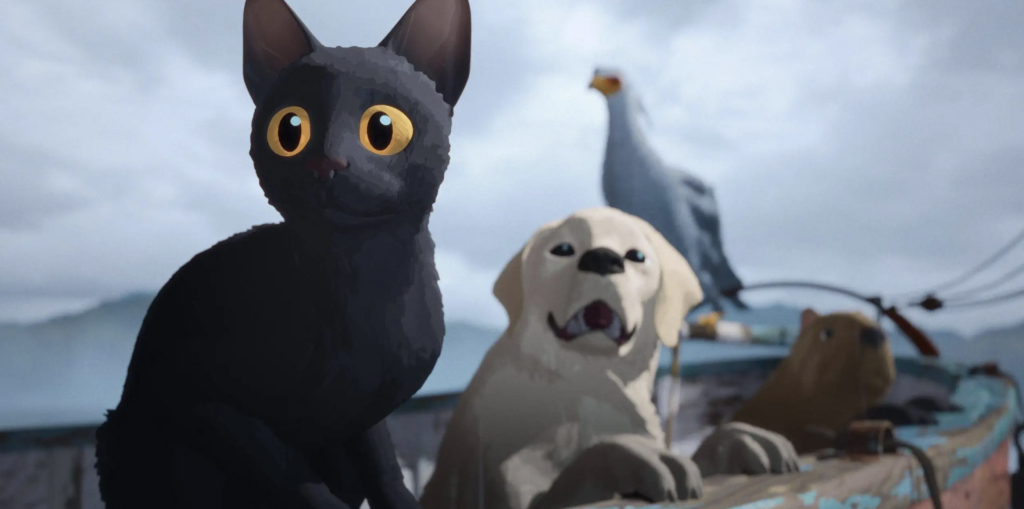
Flow is a big win for Latvia lately, having recently scooped up a Golden Globe for Best Motion Picture in the animated category. It also won the European Film Award for Best Animated Feature Film, among many other wins and nominations. And if Latvia wins on the world stage, we ought to celebrate as Baltic neighbours.
All that being said, taking an hour and a half to watch this animation in peace was worth it objectively speaking. It's a film made entirely without words. No dialogue. No human cast for that matter. Only the sounds of animals, their animated expressions and actions, and scenery flowing by. Just like the title, you have to flow along on the water and see what happens next.
We sometimes hear about how animals are the first to anticipate a disaster, to get moving as a result of something destructive on the way, and in this feature film, we’re right with those animals in that action the entire time. After a brief prelude of dogs-chase-cat, we’re dropped into the point-of-view of a cat. Let’s call them the Cat with a capital C. While running away from a pack of dogs, we hear and then see a stampede of deer, which the Cat dodges. Followed by a huge wave that the Cat can’t do anything about except be swallowed up. The water rises up to the branches of trees, to the canopy, then higher, and even higher still. The focus of the Cat is simple: survival, senses, decisions that could save them or otherwise make them succumb to threats.
They’re all very different, but the situation forces them to find a way to get along, even if it results in several squabbles along the way.
Eventually, the Cat makes their way to a human dwelling, presumably their family home, with just echoes of a person remaining. Oddly enough, it seems humans were the first ones to escape in this story. What we see left behind are countless wood carvings of the Cat and what looks like a massive topiary tribute to this feline friend.
As the water continues to rise with impossible speed, the chances of escape start to drift away (including a sweet yellow lab going by in a boat with the rest of the dog pack). When escaping the water seems impossible, the Cat is finally rescued by a drowsy capybara piloting a sailboat.
Over the course of the film we re-encounter the lab, a ring-tailed lemur, and a flock of secretarybirds. They’re all very different, but the situation forces them to find a way to get along, even if it results in several squabbles along the way. Almost like in Life of Pi by Yann Martel.
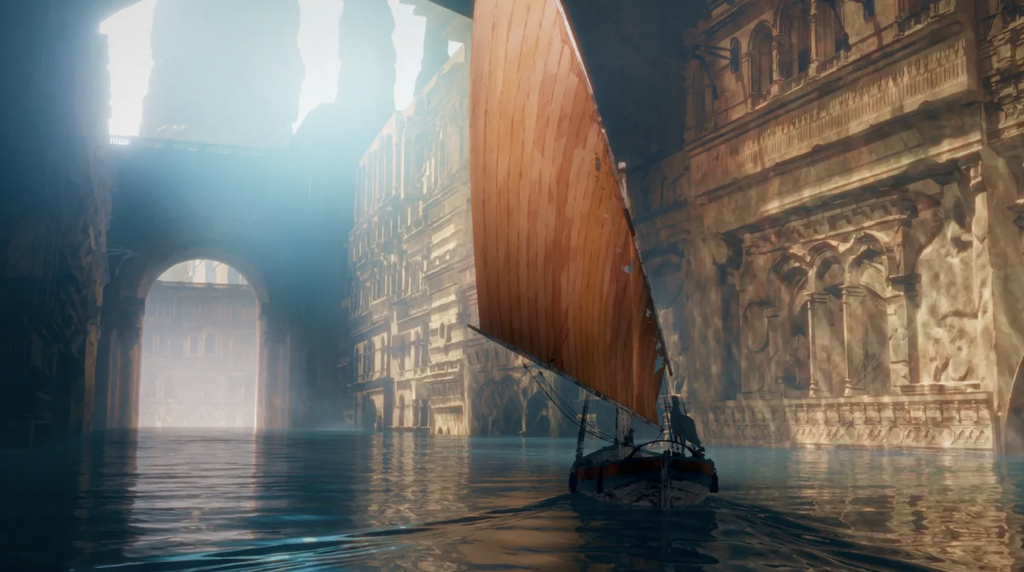
It’s both worrisome and entertaining to see the interaction of each species, to observe their characteristics. It’s evident that the creators of the animation have observed animals extensively themselves. Yet, sometimes groupings of animals that you’d expect to get along better don’t. And groupings that you wouldn’t imagine would ever get along do, with the animals displaying touches of mercy and compromise. We might find some allegory in all of this.
As the sailboat continues, we get a broader picture of their world. A windmill and some pillars of rock, even a whole city made of stone. It’s reminiscent of Petra, Venice, Rome, and the famous PlayStation game Shadow of the Colossus, the latter of which wouldn’t be surprising given the director being a millennial. But it remains unclear where all of the human inhabitants went, or if they were ever there at all. Even more ideas are put into question after a supernatural event experienced by the main secretarybird.
And after several brushes with death, we wonder if the Cat and his fellow animals will ever survive the overwhelming powers of nature.
While not a cushy, easygoing watch, it is recommended if you love animals or if you enjoy animation in general. The animation style has quite an interesting texture that feels easy on the eyes, with beautiful shimmering lights and cool, menacing underwater tones. It’s similar to Zilbalodis’ 2015 short Inaudible.
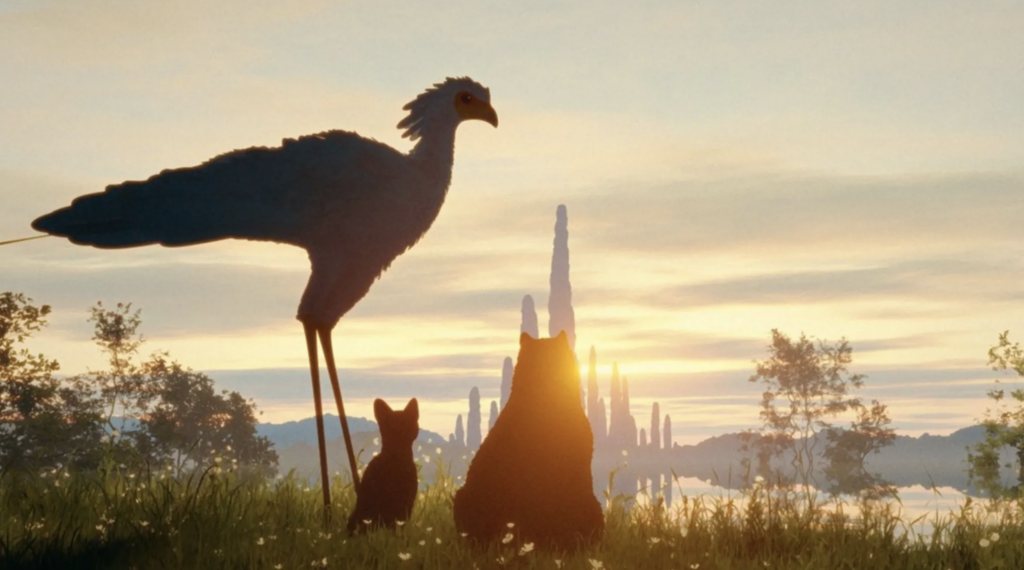
It also has quite a bit of universal appeal based on its lack of dialogue. What we gather in the end—points to consider without a single word being uttered—is how, in the most desperate of situations, sticking together could be what saves us. What’s more, it could give us a reason to survive while we fight for it.


